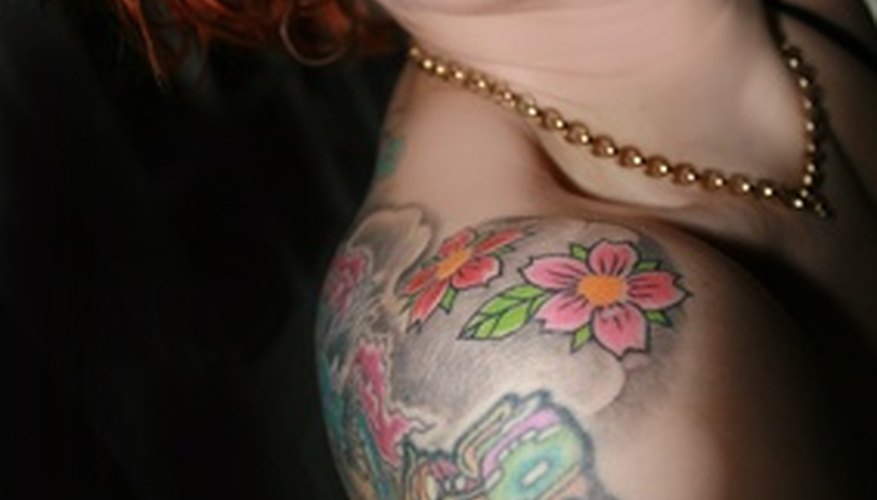Mixing your own tattoo ink allows you to control the chemicals that will come into contact with your clients' bodies. You can also adjust the pigment load and individualise pigment mixing to achieve the effect you want. Tattoos have been around for thousands of years, and until very recently--the last 100 years--tattoo artists made their own inks. It should be noted that glycerine is usually derived from animal fat and therefore isn't appropriate for vegetarians.
- Mixing your own tattoo ink allows you to control the chemicals that will come into contact with your clients' bodies.
Sterilise all equipment to antiseptic standards. Wipe down all surfaces with alcohol wipes. Wear dust mask and gloves. Wipe the gloves with a clean alcohol wipe.
Pour 3.5 cups of witch hazel into a sterile jar and add 1 tablespoon each of glycerine and propylene glycol. Mix thoroughly.
Add 1 inch of pigment powder and pour in 56.7gr of the witch hazel mix in a blender jar. Stir and determine if the mixture is thin enough; if not, add more witch hazel mix until it is easy to stir and not a paste.
Turn the blender to low speed and let it run for 15 minutes. If you are using a sealed container, turn off the blender and vent Reseal the container.
Turn the blender up to medium speed and allow it to spin for one hour more. If you are using a sealed container, stop the blender every 15 minutes and vent the container, reseal it and continue blending.
- Pour 3.5 cups of witch hazel into a sterile jar and add 1 tablespoon each of glycerine and propylene glycol.
- If you are using a sealed container, stop the blender every 15 minutes and vent the container, reseal it and continue blending.
Pour your ink solution into sterile bottles and cap. If you are using a funnel it should also be sterile.
TIP
How much mixture you need to add to the pigment will vary by the pigment, manufacturer and sometimes even by the lot number if the grind of the pigment varies. Clean the blender immediately by adding more of the mix with no pigment to the blender container and turning it to medium or medium high for several minutes. You may repeat this to assist in cleaning the pigment out of the nooks and crannies.
WARNING
All instruments and skin surfaces, including hands of the tattoo artist, should be sterilised to minimise the chance of infection. You must know how to properly use sterile techniques to prevent infection. Pigments should not be sterilised prior to or after mixing because they will be chemically altered, changing their colours and possibly even becoming toxic.
